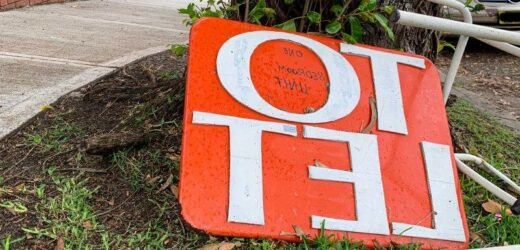Soaring rents across regional areas are exacerbating the shortage of workers, costing parts of the country such as Geelong and the Sunshine Cost more than $700 million each in lost economic activity every year.
Research released on Wednesday, ahead of next week’s jobs and skills summit, shows the surge in housing costs that accompanied the COVID-19 pandemic is a growing factor in the struggle facing many businesses to get staff as prospective workers are in effect priced out of the rental market.
Soaring rents in regional areas have made it more difficult to attract workers, hurting local economies.Credit:Peter Rae
The summit will focus on ways to maintain the low unemployment rate, drive up productivity, lift wages, reduce barriers to work and improve the quality of the workforce. Issues around migration and female participation are expected to dominate.
But the impact of the housing market, which has tightened nationally but especially in regional areas, is not on the summit’s agenda.
Compiled for the “Everybody’s Home” affordable housing campaign, the research by Impact Economics and Policy shows the surge in prices and rents is making it much more difficult for regional areas to attract workers.
It shows that while issues such as migration, female participation and skills are key components of Australia’s worker shortage, the high cost of housing and rents is also a major impediment, particularly in areas where accommodation options are restricted.
“A well-functioning labour market requires labour mobility, where workers can move from one region to another to fill gaps,” it found.
“A lack of affordable and secure housing options limits the ability of workers to easily move between regions and undermines the efficiency of the labour market. The crisis in our rental market is not only producing large rent increases in regional areas, but it is also impacting labour mobility.”
Researchers found that across the Sunshine Coast in Queensland, rents have increased by 36 per cent since March 2020. This has led to a 15 percentage point jump in the number of low-income households suffering rental stress, to 39 per cent.
Over the same period, job vacancies across the region have soared by 259 per cent, to 3678 positions from 1415.
In Geelong in Victoria, more than a quarter of low-income households are in rental stress after a 17 per cent lift in rents since the start of the pandemic. Vacancies in the area have jumped by 133 per cent to more than 3400.
One of the worst-hit areas has been NSW’s Illawarra and South Coast region. Rents there have increased by almost 42 per cent since the advent of COVID-19, taking to 46 per cent the proportion of low-income households in rental stress.
Vacancies there have lifted by 113 per cent, to 2848 from 1333.
The report estimates the shortage of workers is costing the Sunshine Coast $786 million a year in lost economic output. In Geelong, the annual cost is $760 million while the Illawarra and South Coast is losing $642 million.
It is not just rent that has soared in regional areas.
Data from CoreLogic shows that at the start of the year, annual house values across the Illawarra were growing at more than 30 per cent. Although they have slowed since then, the median house value in the region is still above $1 million.
House values along the Sunshine Coast hit an annual growth rate of almost 36 per cent, with the median value at $1.1 million. Geelong’s surge in values reached more than 22 per cent, with the median value at $838,000.
Kate Colvin, spokesperson for the “Everybody’s Home” campaign, said regional areas were already facing a social crisis because of their chronic lack of affordable housing. They were now facing an economic crisis.
“The inability to find a rental and eye-watering rent increases for the few places available is deterring people from taking up jobs in regional communities,” she said.
“Employers tell us constantly that prospective employees tell them they can’t move to the community if they can’t find a place to live. Our completely lopsided housing system is choking off the economic potential of regional Australia.”
Colvin said the link between employment and housing should be at the top of next week’s summit, arguing an increase in social and affordable accommodation would give people on modest incomes a chance to move to new jobs.
The two-day jobs summit, which will feature 100 people from business, unions and the non-government sector, starts on September 1.
Cut through the noise of federal politics with news, views and expert analysis from Jacqueline Maley. Subscribers can sign up to our weekly Inside Politics newsletter here.
Most Viewed in Politics
From our partners
Source: Read Full Article



